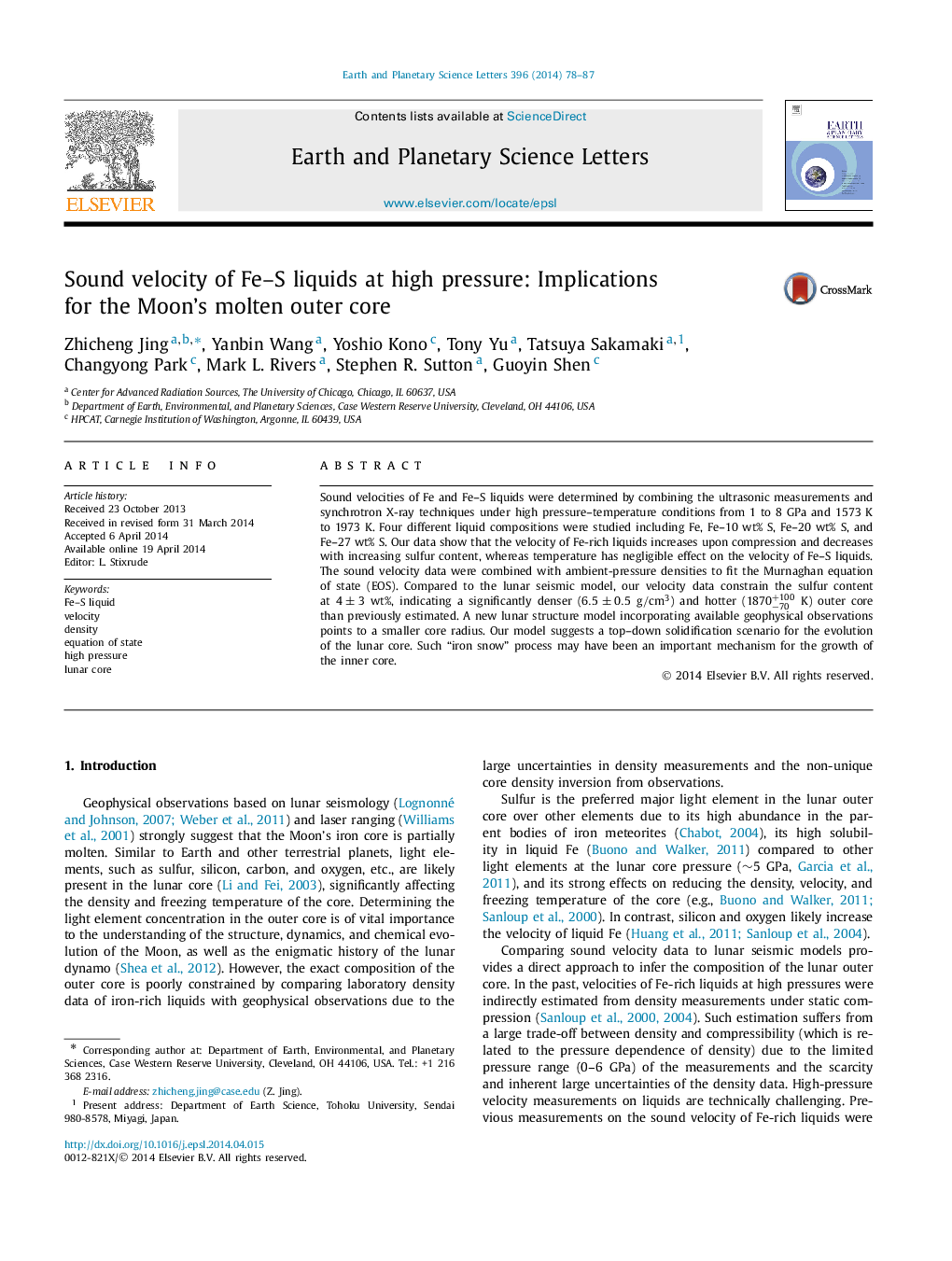| Article ID | Journal | Published Year | Pages | File Type |
|---|---|---|---|---|
| 6429532 | Earth and Planetary Science Letters | 2014 | 10 Pages |
â¢Sound velocities of Fe and Fe-S liquids were measured up to 8 GPa and 1973 K.â¢Velocity increases with P, decreases with sulfur content, and is independent of T.â¢Sulfur content, density, and temperature of the lunar outer core were constrained.â¢A new lunar structure model incorporating mineral physics data was proposed.â¢Our model suggests a top-down solidification scenario for the lunar core.
Sound velocities of Fe and Fe-S liquids were determined by combining the ultrasonic measurements and synchrotron X-ray techniques under high pressure-temperature conditions from 1 to 8 GPa and 1573 K to 1973 K. Four different liquid compositions were studied including Fe, Fe-10 wt% S, Fe-20 wt% S, and Fe-27 wt% S. Our data show that the velocity of Fe-rich liquids increases upon compression and decreases with increasing sulfur content, whereas temperature has negligible effect on the velocity of Fe-S liquids. The sound velocity data were combined with ambient-pressure densities to fit the Murnaghan equation of state (EOS). Compared to the lunar seismic model, our velocity data constrain the sulfur content at 4±3wt%, indicating a significantly denser (6.5±0.5g/cm3) and hotter (1870â70+100K) outer core than previously estimated. A new lunar structure model incorporating available geophysical observations points to a smaller core radius. Our model suggests a top-down solidification scenario for the evolution of the lunar core. Such “iron snow” process may have been an important mechanism for the growth of the inner core.
